Abstract
Total and unbound testosterone and Δ4-androstenedione have been determined in 104 cord blood samples. The same sexual steroids and pituitary gonadotropins have been measured in 46 normal male infants aged 27-348 days and 34 normal female infants aged 19-332 days.
In cord blood of female neonates mean total and unbound testosterone was 29.6±7.5 and 0.89±0.4 ng/100 ml, respectively (mean±1 SD); Δ4-androstenedione was 93±38 ng/100 ml. In male neonates mean plasma total and unbound testosterone was 38.9±10.8 and 1.12±0.4 ng/100 ml; Δ4-androstenedione was 85±27 ng/100 ml.
In female infants testosterone concentrations remained constant during the 1st yr of life with a mean concentration of 7±3 ng/100 ml. Mean unbound testosterone and Δ4-androstenedione concentrations were 0.05±0.03 and 16.7±8.3 ng/100 ml, respectively. Mean plasma levels of follicle-stimulating hormone and luteinizing hormone were 8.7±3.3 and 12.9±7.7 mU/ml.
In male infants mean plasma total testosterone concentration increased to 208±68 ng/100 ml from birth to 1-3 mo of age, decreasing thereafter to 95±53 ng/100 ml at 3-5 mo, 23.2±18 ng/100 ml at 5-7 mo, and reached prepubertal levels (6.6±4.6 ng/100 ml) at 7-12 mo. Mean unbound testosterone concentration plateaued from birth to 1-3 mo of age (1.3±0.2 ng/100 ml) decreasing to prepubertal values very rapidly. Mean Δ4-androstenedione concentration, although progressively decreasing during the 1st yr of life to 11.7±4.5 ng/100 ml, was higher than in the female at 1-3 mo of life (34±11 ng/100 ml). Mean plasma level of follicle-stimulating hormone was 6.7±2.9 mU/ml, and that of luteinizing hormone was 19.7±13.5 mU/ml, significantly higher than in the female. There was no correlation between gonadotropin and age or testosterone.
The present data demonstrate that the testes are active during the first natal period. It is tempting to correlate this phenomenon to a progressive maturation of the hypothalamo-pituitary-gonadal axis. It is possible that the surge in testosterone occurring the first 3 mo could play a role in the future life pattern of the male human being.
Full text
PDF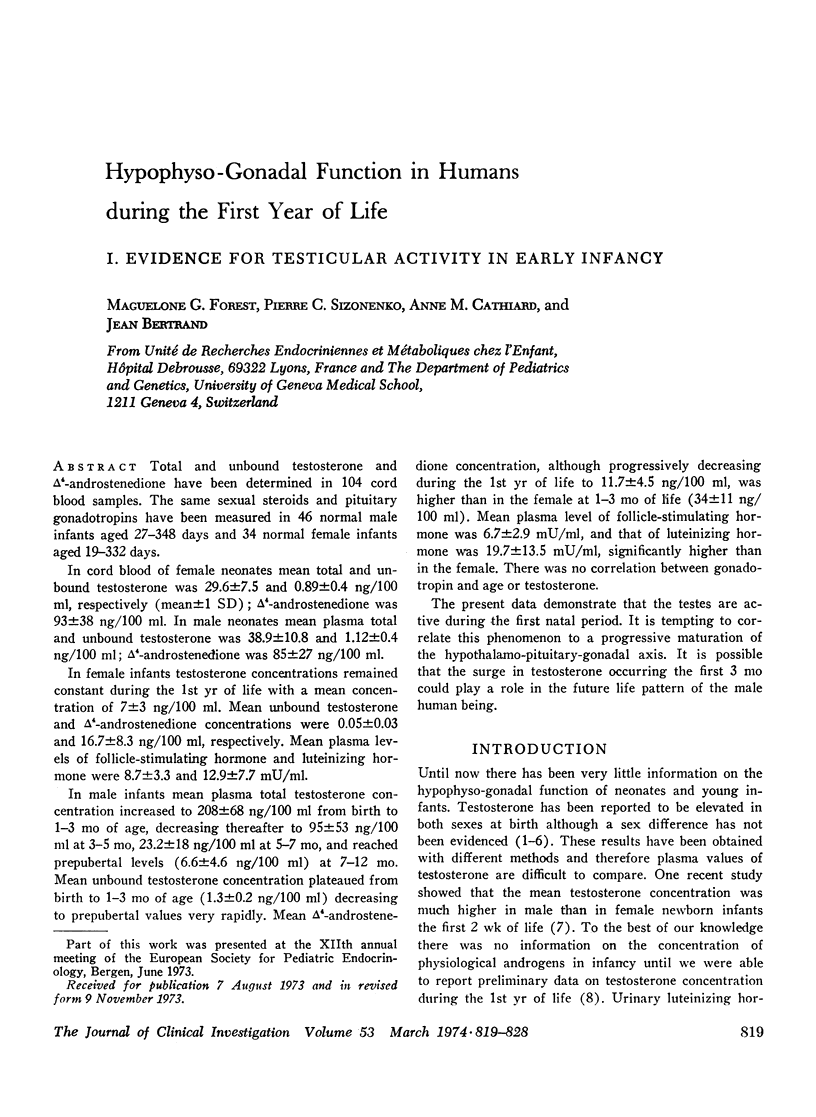
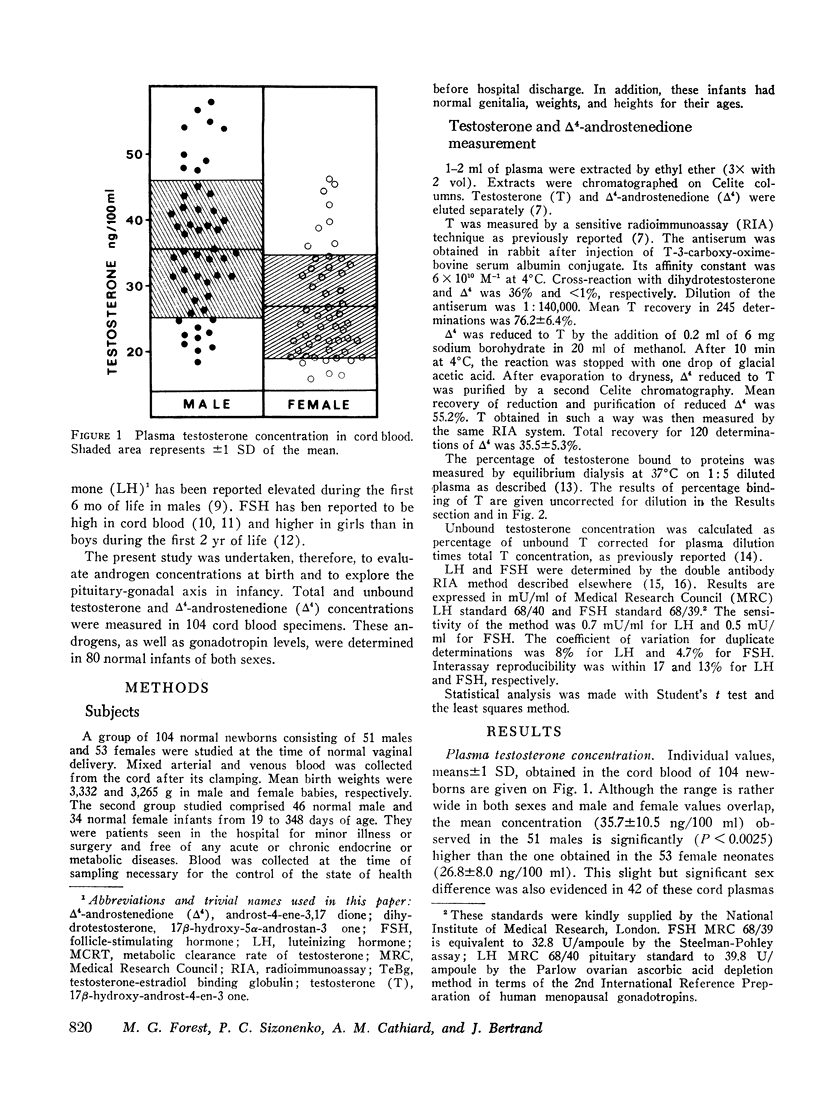
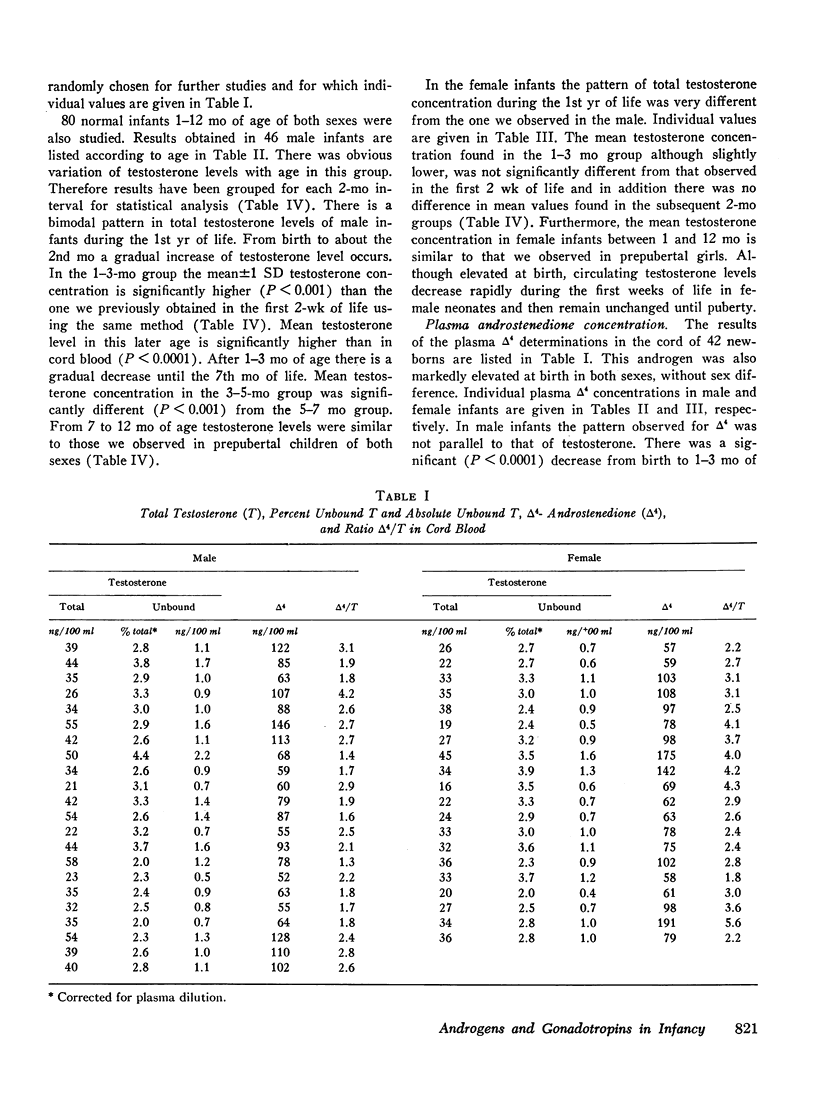
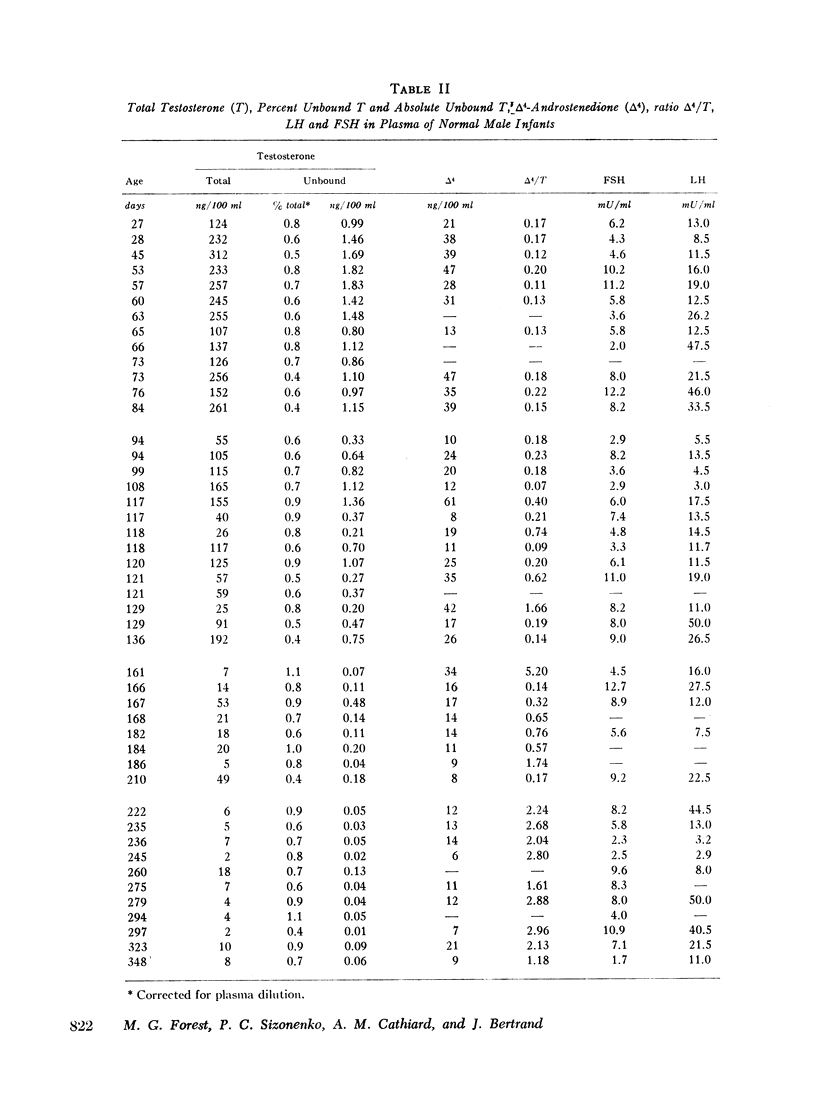
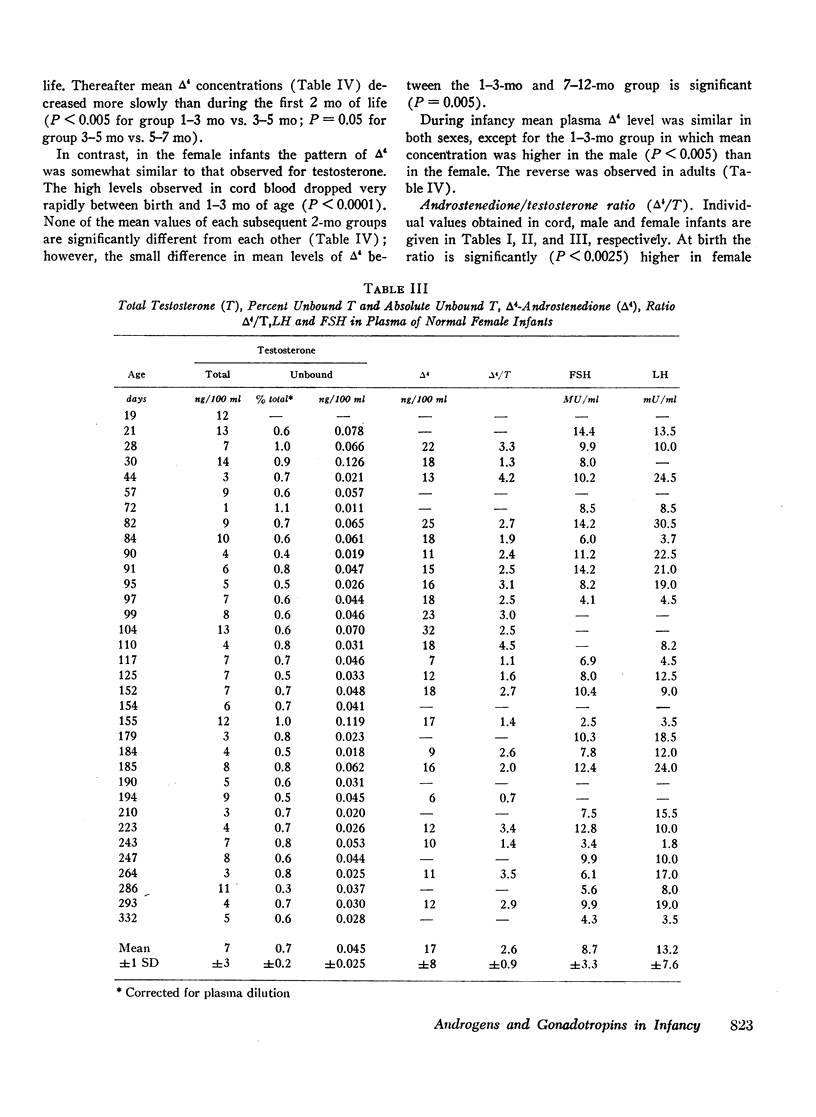
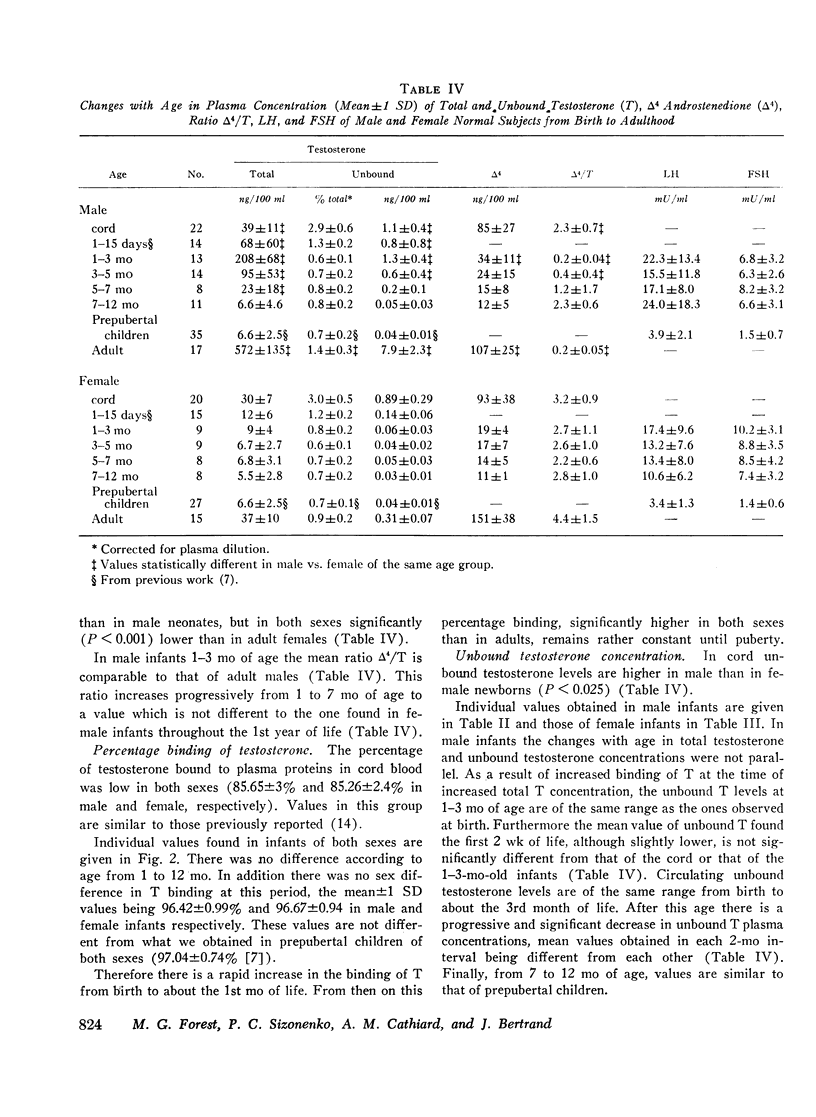
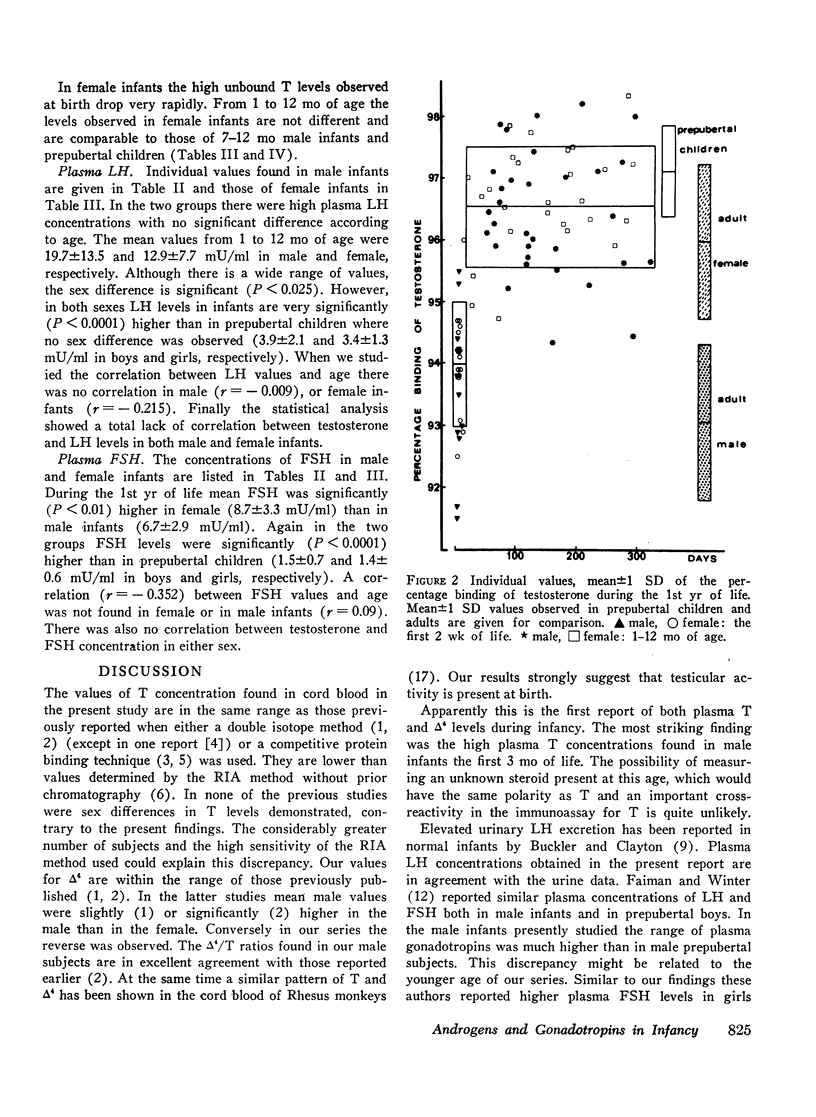
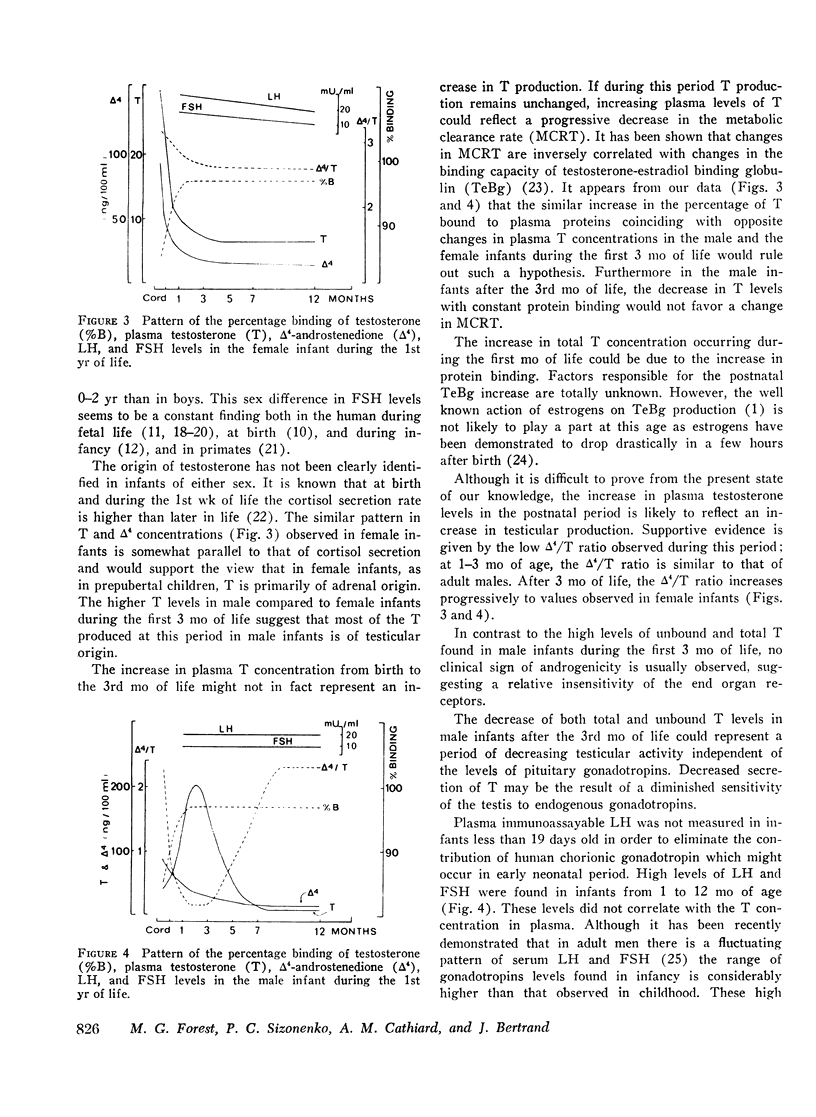
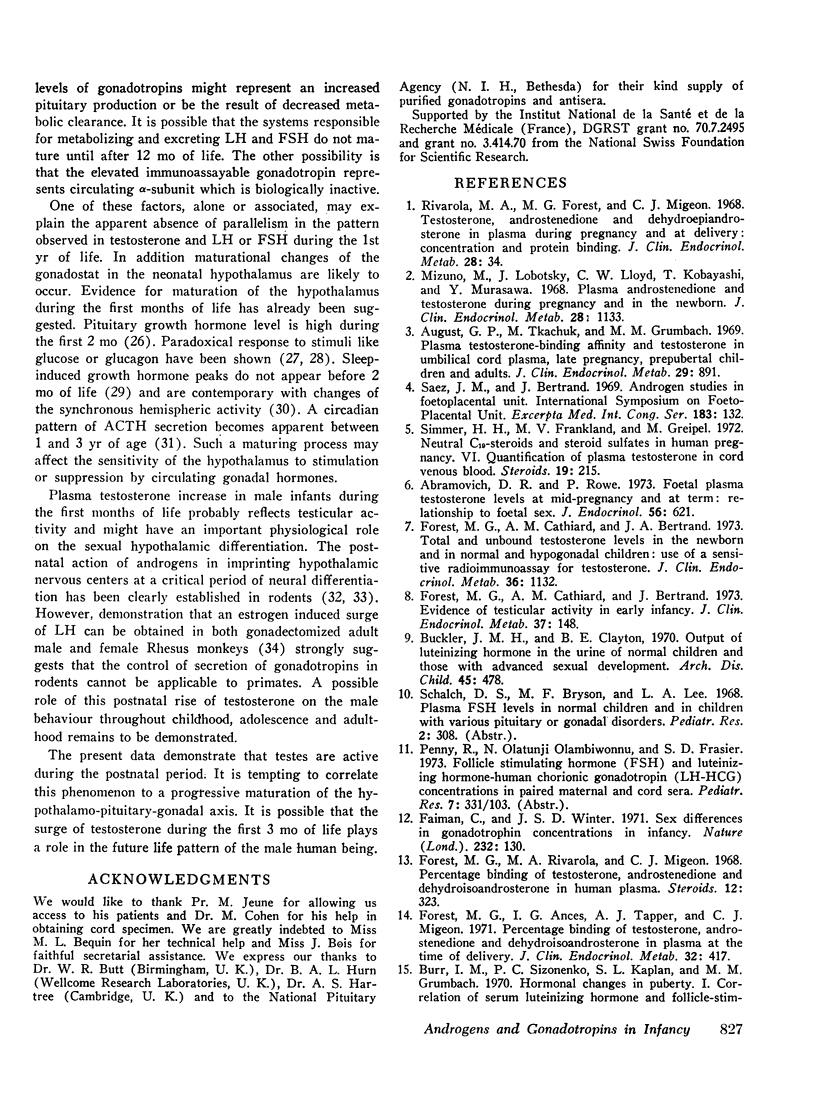
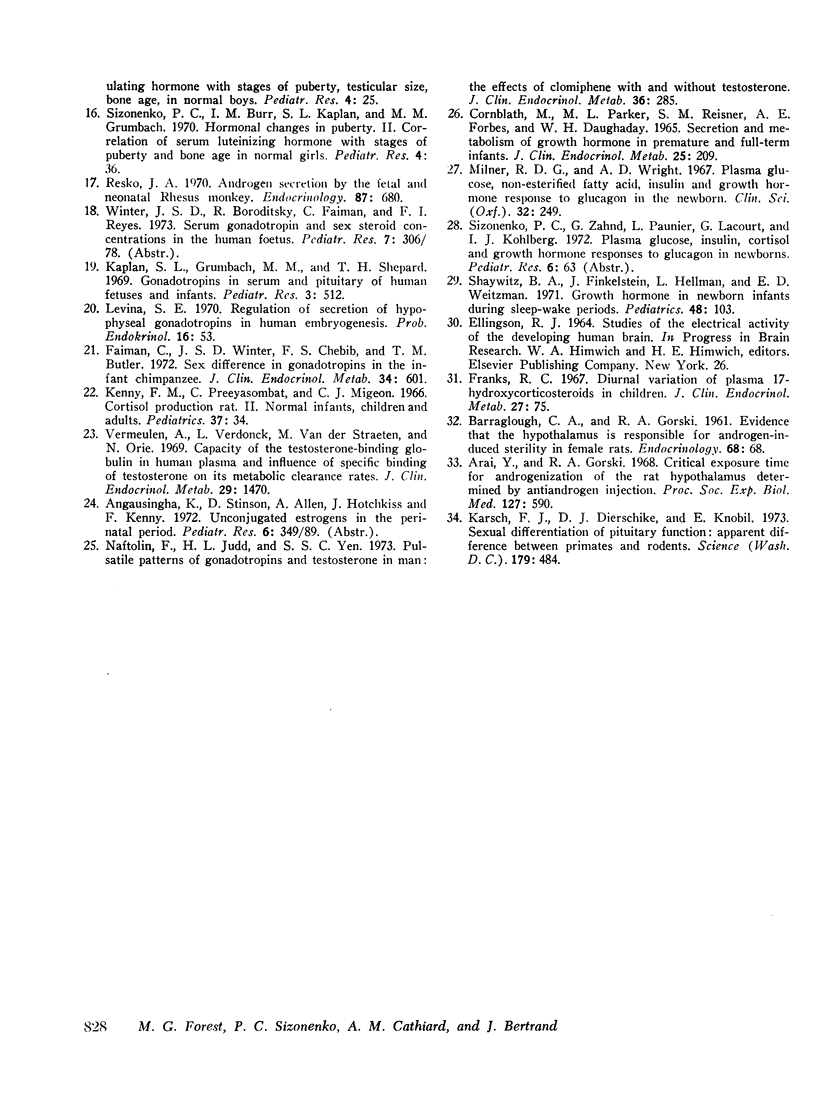
Selected References
These references are in PubMed. This may not be the complete list of references from this article.
- Abramovich D. R., Rowe P. Foetal plasma testosterone levels at mid-pregnancy and at term: relationship to foetal sex. J Endocrinol. 1973 Mar;56(3):621–622. doi: 10.1677/joe.0.0560621. [DOI] [PubMed] [Google Scholar]
- Arai Y., Gorski R. A. Critical exposure time for androgenization of the rat hypothalamus determined by antiandrogen injection. Proc Soc Exp Biol Med. 1968 Feb;127(2):590–593. doi: 10.3181/00379727-127-32749. [DOI] [PubMed] [Google Scholar]
- August G. P., Tkachuk M., Grumbach M. M. Plasma testosterone-binding affinity and testosterone in umbilical cord plasma, late pregnancy, prepubertal children, and adults. J Clin Endocrinol Metab. 1969 Jul;29(7):891–899. doi: 10.1210/jcem-29-7-891. [DOI] [PubMed] [Google Scholar]
- BARRACLOUGH C. A., GORSKI R. A. Evidence that the hypothalamus is responsible for androgen-induced sterility in the female rat. Endocrinology. 1961 Jan;68:68–79. doi: 10.1210/endo-68-1-68. [DOI] [PubMed] [Google Scholar]
- Buckler J. M., Clayton B. E. Output of luteinizing hormone in the urine of normal children and those with advanced sexual development. Arch Dis Child. 1970 Aug;45(242):478–484. doi: 10.1136/adc.45.242.478. [DOI] [PMC free article] [PubMed] [Google Scholar]
- Burr I. M., Sizonenko P. C., Kaplan S. L., Grumbach M. M. Hormonal changes in puberty. I. Correlation of serum luteinizing hormone and follicle stimulating hormone with stages of puberty, testicular size, and bone age in normal boys. Pediatr Res. 1970 Jan;4(1):25–35. doi: 10.1203/00006450-197001000-00003. [DOI] [PubMed] [Google Scholar]
- CORNBLATH M., PARKER M. L., REISNER S. H., FORBES A. E., DAUGHADAY W. H. SECRETION AND METABOLISM OF GROWTH HORMONE IN PREMATURE AND FULL-TERM INFANTS. J Clin Endocrinol Metab. 1965 Feb;25:209–218. doi: 10.1210/jcem-25-2-209. [DOI] [PubMed] [Google Scholar]
- Faiman C., Winter J. S., Chebib F. S., Butler T. M. Sex difference in gonadotropins in the infant chimpanzee. J Clin Endocrinol Metab. 1972 Mar;34(3):601–604. doi: 10.1210/jcem-34-3-601. [DOI] [PubMed] [Google Scholar]
- Faiman C., Winter J. S. Sex differences in gonadotrophin concentrations in infancy. Nature. 1971 Jul 9;232(5306):130–131. doi: 10.1038/232130a0. [DOI] [PubMed] [Google Scholar]
- Forest M. G., Ances I. G., Tapper A. J., Migeon C. J. Percentage binding of testosterone, androstendione and dihydroisoandrosterone in plasma at the time of delivery. J Clin Endocrinol Metab. 1971 Mar;32(3):417–425. doi: 10.1210/jcem-32-3-417. [DOI] [PubMed] [Google Scholar]
- Forest M. G., Cathiard A. M., Bertrand J. A. Evidence of testicular activity in early infancy. J Clin Endocrinol Metab. 1973 Jul;37(1):148–151. doi: 10.1210/jcem-37-1-148. [DOI] [PubMed] [Google Scholar]
- Forest M. G., Cathiard A. M., Bertrand J. A. Total and unbound testosterone levels in the newborn and in normal and hypogonadal children: use of a sensitive radioimmunoassay for testosterone. J Clin Endocrinol Metab. 1973 Jun;36(6):1132–1142. doi: 10.1210/jcem-36-6-1132. [DOI] [PubMed] [Google Scholar]
- Forest M. G., Rivarola M. A., Migeon C. J. Percentage binding of testosterone, androstenedione and dehydroisoandrosterone in human plasma. Steroids. 1968 Sep;12(3):323–343. doi: 10.1016/0039-128x(68)90025-1. [DOI] [PubMed] [Google Scholar]
- Franks R. C. Diurnal variation of plasma 17-hydroxycorticosteroids in children. J Clin Endocrinol Metab. 1967 Jan;27(1):75–78. doi: 10.1210/jcem-27-1-75. [DOI] [PubMed] [Google Scholar]
- Karsch F. J., Dierschke D. J., Knobil E. Sexual differentiation of pituitary function: apparent difference bewteen primates and rodents. Science. 1973 Feb 2;179(4072):484–486. doi: 10.1126/science.179.4072.484. [DOI] [PubMed] [Google Scholar]
- Kenny F. M., Preeyasombat C., Migeon C. J. Cortisol production rate. II. Normal infants, children, and adults. Pediatrics. 1966 Jan;37(1):34–42. [PubMed] [Google Scholar]
- Levina S. E. Reguliatsiia sekretsii gipofizarnykh gonadotropinov v émbiogeneze cheloveka. Probl Endokrinol (Mosk) 1970 May-Jun;16(3):53–59. [PubMed] [Google Scholar]
- Milner R. D., Wright A. D. Plasma glucose, non-esterified fatty acid, insulin and growth hormone response to glucagon in the newborn. Clin Sci. 1967 Apr;32(2):249–255. [PubMed] [Google Scholar]
- Mizuno M., Lobotsky J., Lloyd C. W., Kobayashi T., Murasawa Y. Plasma androstenedione and testerone during pregnancy and in the newborn. J Clin Endocrinol Metab. 1968 Aug;28(8):1133–1142. doi: 10.1210/jcem-28-8-1133. [DOI] [PubMed] [Google Scholar]
- Naftolin F., Judd H. L., Yen S. S. Pulsatile patterns of gonadotropins and testosterone in man: the effects of clomiphene, with and without testosterone added. J Clin Endocrinol Metab. 1973 Feb;36(2):285–288. doi: 10.1210/jcem-36-2-285. [DOI] [PubMed] [Google Scholar]
- Resko J. A. Androgen secretion by the fetal and neonatal rhesus monkey. Endocrinology. 1970 Oct;87(4):680–687. doi: 10.1210/endo-87-4-680. [DOI] [PubMed] [Google Scholar]
- Rivarola M. A., Forest M. G., Migeon C. J. Testosterone, androstenedione and dehydroepiandrosterone in plasma during pregnancy and at delivery: concentration and protein binding. J Clin Endocrinol Metab. 1968 Jan;28(1):34–40. doi: 10.1210/jcem-28-1-34. [DOI] [PubMed] [Google Scholar]
- Shaywitz B. A., Finkelstein J., Hellman L., Weitzman E. D. Growth hormone in newborn infants during sleep-wake periods. Pediatrics. 1971 Jul;48(1):103–109. [PubMed] [Google Scholar]
- Simmer H. H., Frankland M. V., Greipel M. Neutral C 19 -steroids and steroid sulfates in human pregnancy. VI. Quantification of plasma testosterone in cord venous blood. Steroids. 1972 Feb;19(2):215–228. doi: 10.1016/0039-128x(72)90006-2. [DOI] [PubMed] [Google Scholar]
- Sizonenko P. C., Burr I. M., Kaplan S. L., Grumbach M. M. Hormonal changes in puberty. II. Correlation of serum luteinizing hormone and follicle stimulating hormone with stages of puberty and bone age in normal girls. Pediatr Res. 1970 Jan;4(1):36–45. doi: 10.1203/00006450-197001000-00004. [DOI] [PubMed] [Google Scholar]


